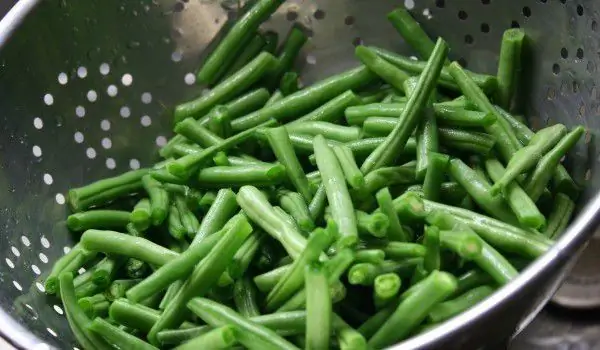2025 Author: Jasmine Walkman | [email protected]. Last modified: 2025-01-23 10:18
Artificial sweeteners are added to foods and beverages because they have the advantage of not containing calories. They are preferred by people who follow a diet or keep their figure. There are many claims about the side effects of sweeteners, which range from anxiety, to blindness and Alzheimer's. What is the reality and what do we need to know about sweeteners and the permissible daily doses of fake sugar?
Are sweeteners a sweet poison?
Like other flavorings sweeteners are placed in food and beverages after checking their chemical composition and experiments. Scientists determine how much of the sweetener being tested is good to take daily without risk. This measure is called permissible daily intake. Most often it is 100 times below the amount at which the substance can cause real harm. It is a daily intake for life. There are now several artificial sweeteners in the store network - aspartame, acesulfame, saccharin, sucralose, neotam and cyclamate. We need to be familiar with them.
Saccharin (E954)
Saccharin is the first artificially created sweetener. His discovery is a coincidence. The chemist Konstantin Falberg, who worked with Professor Ira Ramsen in 1879, at noon tasted the unexpected sweet taste of the dishes coming from his hands. Earlier in the day, he worked with the substance from which he later synthesized saccharin.
Saccharin is the most widely used sweetener, although it has been banned many times. Its sweet taste is about 300 times stronger than that of sugar, it has no calories and the body does not absorb it. However, it tastes like metal and this is considered its most serious disadvantage, so combine it with other artificial sweeteners. There are claims that it has carcinogenic properties and causes crises in the biliary system, but this has not yet been proven.
The harmless intake per day is up to 0.2 grams per day, ie 5 milligrams per kilogram of human weight.
Aspartame (E951)

Aspartame is the most famous of the artificial sweeteners, which is the subject of the most controversy. It was created in 1965 from two artificial amino acids that serve to synthesize proteins in the body. Its sweetness exceeds about 200 times that of sugar, does not carry calories and is not absorbed by the body.
Some time ago, aspartame was targeted as the most dangerous of sweeteners, leading to brain tumors. This conclusion was made on the basis of studies on experimental mice that live a short life and have a predisposition to cancer.
In fact, aspartame is mainly harmful to the teeth, its sweetness exceeds 300 times that of sugar.
Harmless dose of aspartame per day is up to 3.5 grams per day, ie 50 milligrams per kilogram of human weight.
Acesulfame K (E950)

Acesulfame K also the result of an accidental discovery by chemist Carl Klaus in 1967. Its sweetness exceeds about 200 times that of sugar, has no calories, is not absorbed by the body. It has a slightly bitter taste, which is why it is combined with other sweeteners. It is believed to be carcinogenic, acting on nerves and heart.
The harmless daily intake is up to 1 gram, ie 15 milligrams per kilogram of body weight.
Cyclamate (E952)
It was received in 1937. The sweetness of cyclamen is about 50 times more than that of sugar, without calories and without absorption by the body. It is taken together with other sweeteners. It is said to cause kidney problems.
The harmless daily intake is 0.8 grams.
Sucralose
The discovery of sucralose is in the 60s of last century.
The harmless dose per day is 5 milligrams per kilogram of body weight.
Neotam (E961)
The Neotam is 7,000 to 13,000 times more sweet than sugar. Its use is very limited, as it is a new and still poorly researched sweetener.
Safe daily intake - less than 2 milligrams per kilogram of body weight.
Recommended:
What Is The Daily Intake Of Carbohydrates

Carbohydrates are an important source of energy for the body. Their reference value for the average adult is 310 grams. Despite the generally accepted limits for the intake of carbohydrates, proteins and fats, they are most accurately determined individually, according to height, weight, physical activity.
Chia (chia) - Benefits, Intake And Permitted Daily Dose

Chia (Salvia Hispanica and Salvia Columbariae) are small and hard seeds, the fruit of a plant that closely resembles sage, with extremely small sizes. In the beginning, the small seeds of the plant were grown as a decorative element, but after a number of studies it became clear that the seeds are a great source of nutrients for the body.
Daily Intake Of Protein And Carbohydrates

Proteins are very important molecules in our cells. They are involved in almost all cellular functions. Each protein in the body has a specific function. Some proteins are involved in the structural of the immune system, while others are involved during movement or in defense against microbes.
Recommended Daily Intake Of Goji Berry

Goji berry is a highly valued plant used in traditional Chinese medicine. The first records of it date back to 5000 BC, when it was grown in the Tibetan Himalayas and northern China. Fresh goji berries are usually only available in the areas where they are grown.
An Artificial Sweetener Has Been Declared An Insecticide

The results of a study cited by UPI show that one of the most popular artificial sweeteners, Truvia, is a likely insecticide. The new study shows that fruit flies that consumed the sweetener lived 5.8 days, while flies that did not taste the artificial sweetener lived between 38.

